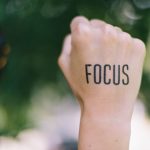Ever been in class and see someone looking very yogic and wise by making funny gestures with their hands? These are mudras, and they’re more powerful than they look. When used with awareness, mudras can alter our mood, change our attitude and increase our concentration. On advanced practitioners, it is thought that mudras can be a part of the awakening of our kundalini power. Stronger than they look, right?
See Also: Use Kundalini Yoga To Awaken Your True Power
Much Ado About Mudras
Mudra is a Sanskrit word usually translated as ‘seal’, or ‘gesture’. Mudras can be found in many guises, but the most commonly used in class are hand mudras. How we place our fingers and thumbs in hand mudras indicate where we want to direct our energy, and each finger represents a different element:
- The thumb represents the fire element and the universal soul, or consciousness
- The index finger represents the air element and the individual soul
- The middle finger represents the space element and the ego
- The ring finger represents the earth element and illusion
- The little finger represents the water element and karma
By balancing out the five elements, we help to keep energy flowing through the body, keeping ourselves in balance and connecting more with our subtle body. Not only this, but if your mind tends to get easily distracted in class (we’ve all been there), then using mudras can help to promote mindfulness.
5 Mudras You Should Know
1. Jnana mudra, symbol or seal of knowledge
WHAT: Also known as Chin mudra, this mudra represents clarity and knowledge. The meeting of the index finger and thumb symbolises the joining of wisdom (jnana) and chin (consciousness), and thus by the joining of the two symbolises the union of yoga.
HOW: Tip of index finger joins tip of thumb. Other fingers extended. If the fingertips face down, it’s known as Jnana mudra whereas if the fingertips face up towards the sky, it’s called Chin Mudra.
WHEN: In seated meditation.
2. Anjali mudra, the heart mudra
WHAT: The heart mudra is probably one of the most easily recognisable mudras in yoga. Sometimes use to start a sun salutation, come to tadasana, or to end class, we bring our hands together to recognise the wisdom that lies within the heart. Because of this, it is also known as ‘Namaste hands’.
HOW: Palms of the hands pressing together in front of the heart space.
WHEN: At the end of class when saying namaste.
3. Yoni mudra
WHAT: Yoni translates as womb, or source. For anyone interested in the feminine power within yoga, I highly recommend Yoni Shakti by Uma Dinsmore-Tuli.
HOW: Join the palms of the hands together as in anjali mudra then open the hands so the palms face towards the body. The index fingers remain touching, and point down. The thumbs join at the top to create a downward shaped triangle. The remaining three fingers can be interlocked, or the palms can remain facing towards the body.
WHEN: Use in supta baddha konasana (Recline Bound Angle Pose), resting the hands on the lower abdomen
4. Hridaya mudra
WHAT: The heart gesture.
HOW: Place tip of the index finger to root of the thumb, like you’re making an OK symbol a la 1990s, and place the tips of the middle finger and ring finger to the tip of the thumb. Keep the little finger straight. The middle finger and ring finger are thought to relate to energy pathways around the heart.
WHEN: Use whenever you need a good cry. This mudra allows bent up emotions to release, and for the heart to be unburdened. Keep your focus on breathing around the chest area.
See Also: The User’s Guide to the Chakras: the Anahata Chakra
5. Bhairava mudra
WHAT: Translated as fierce attitude.
HOW: Place the right hand on top of the left so that the palms of both hands are facing up. The hands represent ida and pingala nadis, and by combining the two, the individual can be united with the great consciousness.
WHEN: During pranayama practice.
For Further Use
There are countless mudras out there, and these are just a few of our favourites. To learn more it’s worth checking in with a teacher you trust or keep an eye out for Swami Saradananda’s latest book Mudras for Modern Life. In the meantime, why not give these a try in your practice or your classes and see what happens for yourself?













